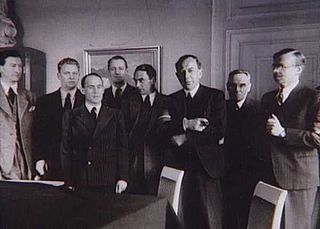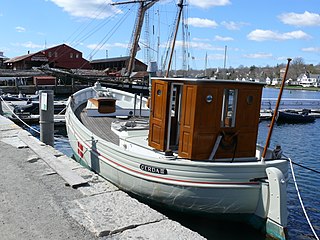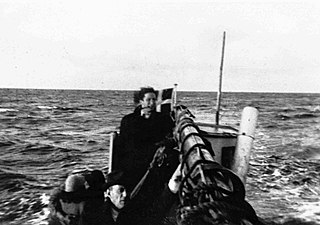 W
WThe Danish resistance movements were an underground insurgency to resist the German occupation of Denmark during World War II. Due to the initially lenient arrangements, in which the Nazi occupation authority allowed the democratic government to stay in power, the resistance movement was slower to develop effective tactics on a wide scale than in some other countries.
 W
WThe Danish Brigade in Sweden or in short, the Danish Brigade was a military unit made up of Danish refugees during World War II. Trained and supplied by Sweden, the brigade was created to help liberate Denmark. Ultimately it was only deployed on the day of the German surrender in the country and was involved in very little fighting.
 W
WDuring World War II, the Danish government chose to cooperate with the Nazi occupation force. Even though this applied to the Danish police as well, many were reluctant to cooperate. As a result, a large number of members of the Danish police force were deported to Nazi concentration camps in Germany. The Gestapo established the collaborationist HIPO Corps to replace them.
 W
WThe Danish Freedom Council was a clandestine body set up in September 1943 in response to growing political turmoil surrounding the occupation of Denmark by German forces during the Second World War.
 W
WGerda III is a lighthouse tender located at Mystic Seaport in Mystic, Connecticut, United States. Gerda III was built in 1928 in Denmark and was used as a common work boat. In 1943 Gerda III was used by 19-year old Henny Sinding to smuggle Jews from Nazi occupied Denmark to Sweden. Approximately 300 Jews were rescued by Gerda III. The Danish Parliament donated Gerda III to The Museum of Jewish Heritage in New York City. Mystic Seaport now cares for the vessel and features her as part of their collection of watercraft. The rescue story is the subject of the film, A Day in October, released in 1991.
 W
WLiselund is an 18th-century aesthetically landscaped park, complete with several exotic buildings and monuments. Located close to Møns Klint on the north-eastern corner of the Danish island of Møn, it is deemed to be one of the finest examples in Scandinavia of Romantic English gardening. The park was created in the 1790s by French nobleman Antoine de Bosc de la Calmette for his wife Elisabeth, commonly known as Lisa. Liselund, roughly translated, means Lise's grove.
 W
WThe rescue of Stutthof victims in Denmark took place on 5 May 1945 at Klintholm Havn, a small fishing village on the south coast of the island of Møn, when a barge full of famished Nazi concentration camp prisoners was towed into harbour.
 W
WThe rescue of the Danish Jews occurred during Nazi Germany's occupation of Denmark during World War II. On October 1, 1943, Nazi leader Adolf Hitler ordered Danish Jews to be arrested and deported. The Danish resistance movement, with the assistance of many Danish citizens, managed to evacuate 7,220 of Denmark's 7,800 Jews, plus 686 non-Jewish spouses, by sea to nearby neutral Sweden.
 W
WThree Hearts and Three Lions is a 1961 fantasy novel by American writer Poul Anderson, expanded from a 1953 novella by Anderson which appeared in Fantasy & Science Fiction.